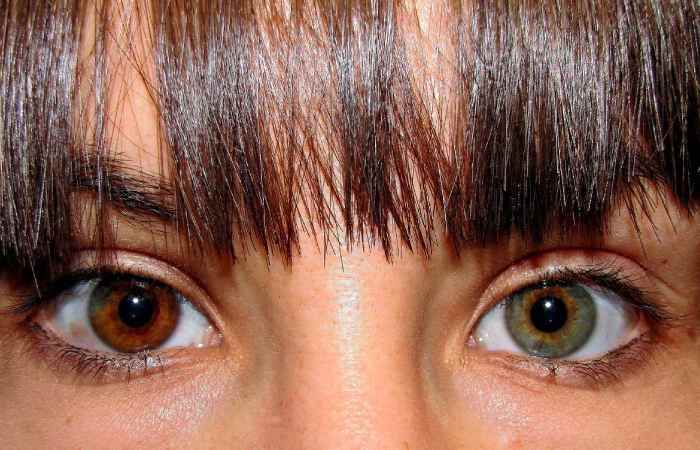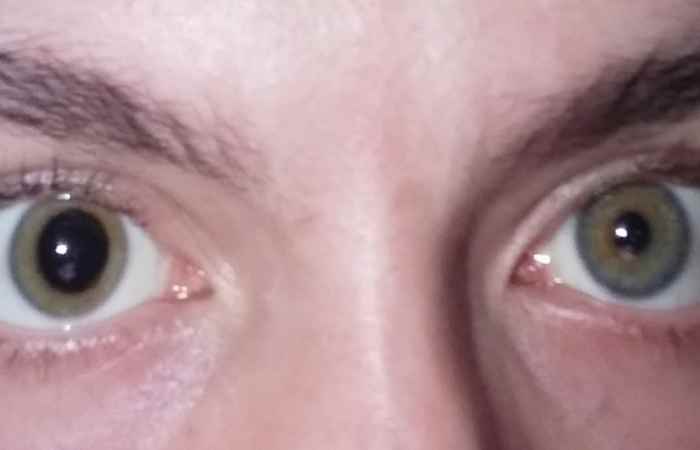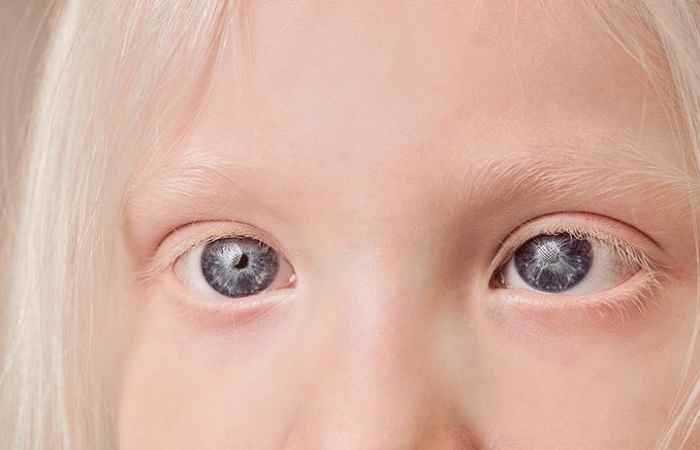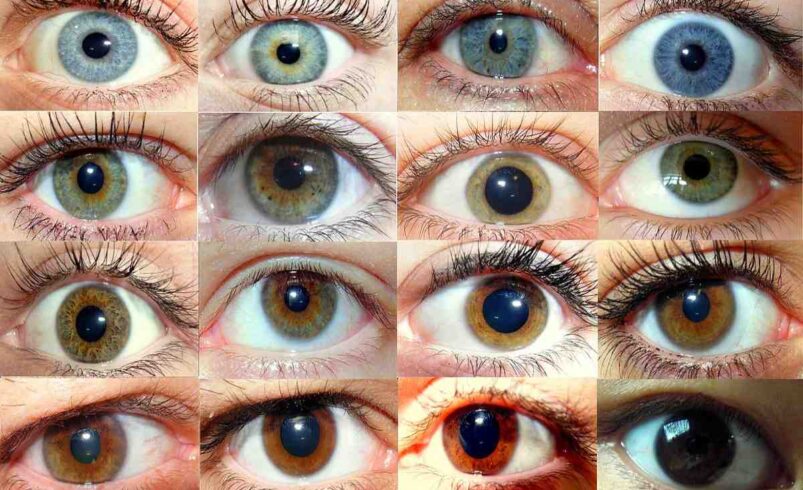Among the four basic types of eye color (brown, blue, green, hazel) the green is considered as the least common color. However, new classifications say another color is almost as rare: It is important to note that the main color of the current visual identity reflects the hopeless nature of the protagonist’s situation and is gray. Thus, brown is leading in terms of popularity all over the world, while blue and hazel following them.
Eye colour like many other physical characteristics is genetic and can involve many genes that controls the depth of shade. Those genes that code for pigments like melanin, eumelanin, and pheomelanin control the color of skin hair, as well as the eyes. Eyes are colored because of the specific amount and types of pigments which are found in the iris of the human organ.
Rarest and Most Common Eye Colors
The most common eye colors include:The most common eye colors include:
- Brown
- Blue
- The colour is hazel (often classified under the amber category).
- Green
Of those four, green is the least common, represented in about 9% of the Americans and only 2% of the world population. It is followed by hazel/amber color that is the second rarest color after green.
Second most popular is blue and then we have brown which exists in 45% of the US population and nearly 80% globally.
Black does not mean an eye color. But some of them might really seem black and they are either an incredibly dark brown or large pupils.
New classifications have defined gray as another standard colour. 1 In studies that were held earlier gray and blue was mixed together. American Academy of Ophthalmology. Your blue eyes aren’t really blue.
With this change, gray and green now rank as the rarest eye colors.
| Eye Color | U.S. Population | World Population |
| Gray and other | Less than 1% | 3% |
| Green | 9% | 2% |
| Hazel/amber | 18% | 10% |
| Blue | 27% | 8% to 10% |
| Brown | 45% | 70% to 80% |
It is possible that gray eyes have only this amount of melanin within the front layer that it can absorb the blue wavelengths of light which are reflected off the eye’s tissues. As compared with pale gray eyes, dark gray eyes possess a slightly higher density of melanin in the outermost layer.
What Determines Eye Color?
Eye color, essentially, depends with the amount of clamp melanin or pigments that is produced in the iris of the eyes. Higher content of melanine pigment results to dark eyes while low content leads to light eye color.
Variation in the kind of melanin that is present defines the shade of the eyes. Eumelanin is a black-brown pigment that is associated with human eyes, hair and skin colour. Eumelanin is black or brown pigment present in blue or green or hazel eyes and hair, while Pheomelanin is responsible for yellow-red color, which is for green or amber eyes, red hair, or freckles.
Residents of the island with lighter eyes and skin live in the territories that are farther from the equator. People with darker eyes and skin are found to be residing in warmer climates, near the equator in general.
Genetics of Eye Color
Physicians used to believe that the expiation for eye color had patterns of dominant and recessive genes; provided they were at all present, they were expressed.
That is, dominant traits such as brown eye color would be observed in a child even when one of the parents had this gene. Blue eye color is considered recessive and as such two blue eyed parents cannot produce a child with brown eyes.
Nonetheless the current information depicts that eye color genetics are not as simple as it was initially anticipated. It is important to realize that the majority of eye-color genes are related with transporting, synthesizing, and storing of melanin. Two, melaninous pigment content determines eye color: the more melanin in the iris the eyes are brown, blue or hazel, green, or gray eyes mean less melanin.
That is why the melanin distribution in the front of the iris, as well as in the back and in the stroma or the thickest layer of the cornea between them plays an important role.
What Genes Determine Your Eye Color?
The variation in the forms and pigmentation of skin is brought by;| Hence, multiple genes determine the different arrangements and levels of melanin pigment. OCA2 gene was found to contribute the most to the variation of human eye color.
It is proved that all people had brown eyes 10 000 years ago and only a mutation of the 0CA2 gene created a kind of a button to switch off the production of brown eyes in a person having the mutation.
Scientists have argued consequently since the genetic mutation will involve blue eye color, it will be easy to do focus on every citizen with blue eyes today originated from a single ancestor.
Scientists have established that there are at least other nine genes which are involved in the synthesis and transport of pigments. For instance, the HERC2 gene regulates the activity of OAC2 gene; that is, it activates it and deactivates it when necessary.
There are other genes that are associated with eye color which include ASIP, IRF4, KITLG, OCA2, SLC24A4, SLC24A5, SLC45A2 TPCN2, TYR, and TYRP1. These genes combine innumerably to result in a range of eye colour in persons who possess them.
Other Eye Color Differences
Some rare conditions that affect eye color include:
Heterochromia

Heterochromia is a condition which means that people have two different colors for their eyes. It is something that is in born in some individuals. Sometimes, there is no apparent explanation, but it may be linked to a disorder called piebaldism, which entails missing bits of pigment-forming cells in parts of the head and face, including hair, skin and sometimes one eye.
You can also at some point in life, get heterochromia. It can occur due to:It can occur due to:
- Injury
- Eye surgery
- Some forms of medication such as those used in the treatment of glaucoma.
- Sickness, for instance, glaucoma, and diabetes.
Heterochromia in itself however does not require treatment and is only treated when it is a symptom of an existing illness.
Anisocoria

Anisocoria means that the pupils are unequal in size in one person. As a result the more expanded the pupil is the more black is recorded in the centre portion of the eye. You wouldn’t be an eye color here but it’s something that will make a person look like they are having heterochromia.
Although anisocoria is a condition that is mostly not dangerous, it may be a sign of such severe eye conditions as:
- Nervous system problems
- Previous eye damage
- High stroke risk
- Viral infection
This is a situation known as Adie’s tonic pupil a condition that defines the poor response of a pupil to light.
There is Horner syndrome, it is when a person has drooping eyelids, one of the pupils is larger and there is no sweating on the face.
If along with anisocoria there are some other symptoms, one must address an ophthalmologist – an eye doctor. Watch for symptoms such as:Watch for symptoms such as:
- Dropping eyelids
- Difficulty moving your eye
- Pain in your eye
- Fever
- Headache
- Reduced sweating
Anisocoria itself does not require any treatment, however, pathophysiologic cause for the anisocoria will require some sort of.
Albino Eyes: Red, Pink, Violet

Albinism then refers to a general lack of pigmentation or a shaded body and dark hair and a low level of melanin in the eyes. It can also be partial, where in some people it only causes changes in the eyes only. This is referred to as ocular albinism.
Standard eye colors can be reflected with lighter variations in people with albinism. But they may also have eyes that appear:But they may also have eyes that appear:
- Red
- Pink
- Violet
Red, pink or violet pigment is not present in the iris anyway though. These colors which are perceived by human eyes are as such due to blood vessels located at the back of the eye becoming visible. In other people, the color of the iris prevents the light from observing these blood vessels behind the eye’s colored part.
This is however due to the fact that people with albinism are usually challenged with severe vision impairment. That’s because Melanin plays a critical role of helping the eye to develop during fetal development.
Eye Color and Your Health
In this case, the genetics of having a red eye color or any of the rare appearances might look like something special and different. It may even exceed appearance as in eye color (or shade) is related to one or two health benefits or concerns.
A research that was conducted in 2014 proved that adverse pain endurance was with pregnant women with light-coloured eyes more than with the dark-coloured ones. Sample size for this study was relatively small consisting of only 58 women but the other similar small study also had similar findings.
An article published in 2015 comes up with a clue making people with dark eyes to likely develop hearing complications not caused by aging.
There is also an increased prevalence of light eye colour along with macular degeneration a condition that affects the center field of vision as well as the rate of ocular melanoma- cancer in or around the eye.
Further researches are required to establish similar correlations and relations.
Eye Color and Changes With Age
You learn that the eye color can also change in adulthood. At other times it is not a cause for alarm. Sometimes it is as a result of diseases, use of some chemicals like in medication or from injuries and might require treatment.
If you do not have gray eyes but they seem to turn even grayer, then that could be a cataract. They include this, which is a clouding of the eye’s lens. Cataracts cause alteration in vision and hence may require surgical intervention. Inform your eyecare provider if you think your eyes looked as if they are turning gray or milky.
Brown freckles may appear in your iris with time especially if you expose your eyes to heat or the sun. Most of the time they are benign, however, it is possible for some of them to be malignant, so if you experience them or notice them, go see your provider.
Other diseases such as Fuchs heterochromic iridocyclitis cause lightening of eye colour and can be very dangerous to vision. I am not quite sure what Fuchs is, but it does include inflammation in some of the structures that are located in front of your eye. It may cause:
- American Academy of Ophthalmology: EyeSmart. What might be the cause of the colour changes in my eyes?
- Depending on how your eye quits making pigment, it might cause a change in the color of your eye.
- By regression, atrophy (wasting) of the iris
- Cataracts
Some of the diseases include glaucoma which has an effect on the vision of individuals.
What Is the Most Attractive Eye Color?
Another cross sectional study among 66,000 participants revealed that people prefer green as the most attractive colour of the eye. The poll results ranked eye color by attractiveness: manipulation of internet networks, The 20
- Green: 20. 3%
- Light blue: 16. 9%
- Hazel: 16. 0%
- Dark blue: 15. 2%
- Gray: 10. 9%
- Honey: 7. 9%
- Brown: 5. 9%
Changing Your Eye Color
Contact lenses is the easiest way you can use if you would like to change the color of your eyes. You get contact lenses in different shades and your prescriptions can be incorporated on them.
In case you do not require the vision correction, you can get some that are for fashion. Nonetheless, you should still consult an eye-care professional and you should get a prescription for them.
On page 2, the AAO advises people not to purchase contact lenses without prescriptions to reduce the chance of eye infections.
Summary
Eye color is inherited, but one’s eye color can change by medication side effects or eye diseases. It may interest you to know that gray eyes and green eyes are probably the rarest eye colours.
Your eye colour depends on bunches of genes that make and place pigments in your eyes.
Some eye colour changes can also be attributed to certain rare diseases that affect human beings. It is possible to face the world with heterochromia or having two different colored eyes. Albinism leads to the iris of the eye lacking melanin and thus it results to red, pink, or violet eye colour.

